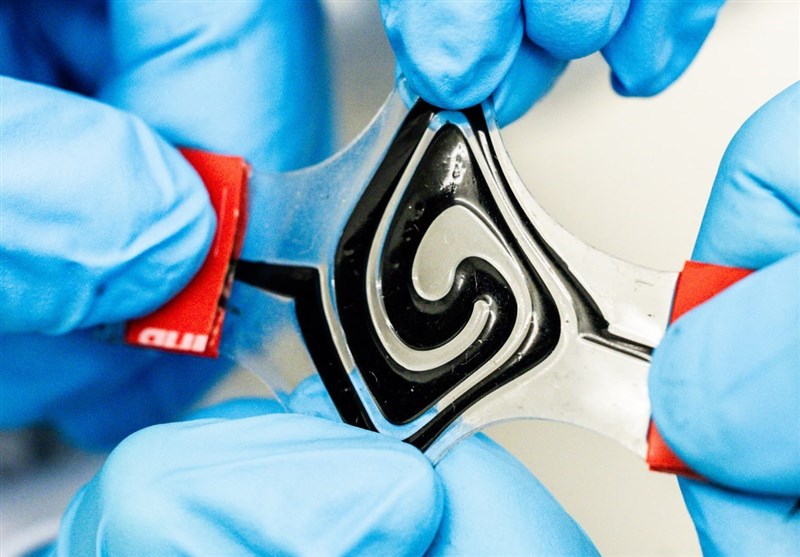Revolutionary Shape-Shifting Fluid Battery Paves the Way for Next-Gen Flexible Electronics
Scientists at Linköping University have developed an innovative soft battery featuring fluid electrodes that can adapt to any shape, positioning it as a potential game-changer for the future of wearable and embedded technologies. This breakthrough, detailed in the journal Science Advances, presents a flexible power source that could transform the design and integration of electronic devices.
Aiman Rahmanudin, an assistant professor at Linköping University, describes the material as having a texture resembling toothpaste. “The material can, for instance, be used in a 3D printer to shape the battery as you please. This opens up for a new type of technology,” he stated.
The need for such advancements comes as projections indicate that over a trillion devices are expected to connect to the Internet within the next decade. This expansion goes beyond traditional electronics like smartphones and smartwatches, encompassing various wearable medical devices, including:
- Insulin pumps
- Pacemakers
- Hearing aids
- Health-monitoring sensors
In the long run, the applications could extend to areas such as soft robotics, electronic textiles, and implanted neural devices. As this growth progresses, the evolution of battery technology becomes essential.
“Batteries are the largest component of all electronics. Today they are solid and quite bulky. But with a soft and conformable battery, there are no design limitations. It can be integrated into electronics in a completely different way and adapted to the user,” Rahmanudin explained.
Collaborating with the Laboratory of Organic Electronics (LOE), Rahmanudin and his team succeeded in creating a stretchable, form-fitting battery by converting solid electrodes into a fluid state. Previous attempts at developing stretchable batteries often relied on mechanical features, such as rubbery composites or sliding contacts, which did not address the core issue of rigidity caused by thicker electrodes.
“Here, we’ve solved that problem, and we’re the first to show that capacity is independent of rigidity,” Rahmanudin added. Earlier efforts using fluid electrodes, typically made from liquid metals like gallium, faced challenges in functionality and often solidified during charge cycles. Many of these flexible batteries also depended on rare materials, raising significant environmental concerns.
In contrast, the team at Linköping University based their battery on conductive plastics, specifically conjugated polymers, and lignin, a byproduct of paper production. The outcome is a rechargeable battery that can:
- Maintain performance over 500 charge cycles
- Stretch to double its original length without losing functionality
“Since the materials in the battery are conjugated polymers and lignin, the raw materials are abundant. By repurposing a byproduct like lignin into a high-value commodity such as a battery material, we contribute to a more circular model. So, it’s a sustainable alternative,” stated Mohsen Mohammadi, a postdoctoral fellow at LOE and one of the lead authors of the study.
Despite this significant progress, the researchers acknowledge that challenges remain, particularly in increasing the battery’s voltage. “The battery isn’t perfect. We have shown that the concept works, but the performance needs to be improved. The voltage is currently 0.9 volts. So now we’ll look at using other chemical compounds to increase the voltage,” Rahmanudin explained. One potential avenue they are exploring is the incorporation of zinc or manganese, two metals that are commonly found in the Earth’s crust.
This innovative development of a soft battery with fluid electrodes signifies a substantial leap forward in the field of electronics. As technology continues to evolve, the integration of such flexible power sources will not only enhance the functionality of existing devices, but also pave the way for new applications that were previously unimaginable.
As the demand for lightweight, adaptable, and environmentally friendly energy solutions grows, the ongoing research into soft batteries is crucial. The findings from Linköping University highlight the importance of sustainable practices in technology development, ensuring that future innovations will be both efficient and responsible.
In summary, the creation of a soft battery with fluid electrodes marks a pivotal moment in the evolution of battery technology. It opens up new possibilities for the design and use of electronics, particularly in the rapidly growing sector of wearable and embedded devices.






